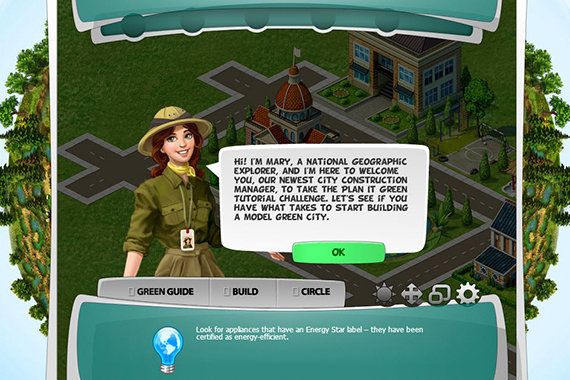Consider your average day for a minute. There is probably a bit of shopping, some time spent browsing the web or playing around with your smartphone, exercise in one form or another. What if such innocuous activities could actually be enhanced by technology to do the planet some good? Here are six ways they can.
ECOSIA

Ecosia
Ecosia is one of the best ideas ever, yet not everyone knows about it. A start-up that kicked off in Berlin in 2009, it’s a search engine like Google or Yahoo, with one decisive difference – it donates 80 percent of its advertising revenue to planting trees. Ecosia is involved in projects all over the world, from Tanzania to the Amazon rainforest, and to date they’ve planted over ten million trees. All you have to do is add the Ecosia extension to your browser and that’s it. It takes about ten seconds to set up, costs you precisely nothing and provides an easy-to-use and very effective search engine.
CLEANSPACE

CleanSpace
Air pollution in cities is now a critical issue, especially in Europe where air quality has been steadily getting worse. CleanSpace is a combination of a tag and an app designed to keep anyone with a smartphone informed about the state of the air they’re breathing, as well as provide pollution maps that enable them to plan their journeys so they can avoid the worst areas. The tag doesn’t need a battery as it uses ‘freevolt’ technology, which harnesses wasted energy from wireless networks. The CleanSpace app also gives its users the chance to accumulate CleanMiles by walking, running or cycling rather than using a car or bus, and these can be exchanged for rewards like a free coffee or money off items with selected retailers.
EAT SEASONALLY

Getty
Want to eat seasonally and thus avoid food that’s been shipped halfway around the world and comes with a big fat carbon footprint? The Seasons app will do exactly that. It covers 214 types of fruit, vegetables, lettuces, herbs, fungi and nuts, and provides a detailed overview of the times to expect harvests for each of them. You can modify your search to see which food is in season in your country, or on your continent and so on. It also includes data on local farmers’ markets where you might find the freshest and tastiest produce.
Advertisement
GREEN COMPUTER GAMES

Nat Geo
Computer games have not exactly been ambassadors for a greener planet. The production and distribution of consoles leaves a considerable carbon footprint, while the amount of electricity they use collectively runs into billions of kilowatt-hours each year. But there are games that promote environmental thinking, like National Geographic’s PlanIt Green, where the goal is to transform a city into a thriving eco-community, ideal for getting both adults and children to think about sustainability. See also the Dutch team behind Doom Prepper Sailors, which uses 3D-printed, remote control boats that provide information on water pollution as you play. Or how about testing your general knowledge at freerice.com? It donates ten grains of rice to the World Food Programme every time you answer a question correctly.
NASA’S EARTH NOW APP

Getty
NASA’s free-to-download Earth Now app offers real-time tracking of the planet’s vital signs, including air temperature, sea levels, carbon dioxide and carbon monoxide levels, and the condition of the ozone layer. If some of the visual information it provides is shocking – retreating glaciers, drought, depletion in ozone – it’s also a constant reminder that even seemingly inconsequential daily acts can make a difference to the state of the planet. The app also includes details on the many satellites orbiting the Earth providing all this environmental information in the first place.
GYM SUSTAINABILITY

Getty
Going to gym may be an arduous weekly occurrence balanced with a revitalising conclusion, but the Italian-designed ARTIS Renew is a revolutionary set of apparatus with sustainability at its forefront that might make the gym trip a little more beneficial – to the planet. The exercise undertaken on the various equipment is recycled to light the displays so you can monitor your progress, while the cardio machines collectively reroute the almighty human energy being produced to effectively power the entire gym. Many places have installed this environmentally pieces of kit, with The Edge in Leeds being one of the first back in 2015. Indeed, soon after, it announced members had generated 574KWH of power, saving 258Kg of CO2. Not bad for a month of workouts.
Advertisement